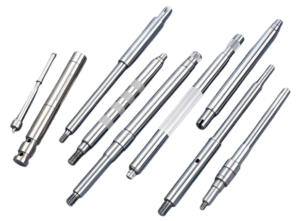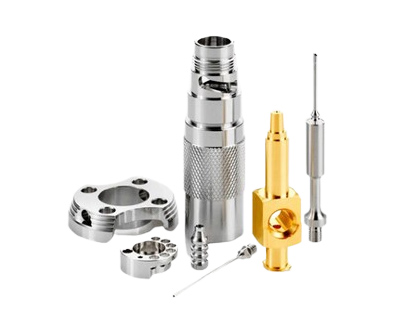The motor shaft serves as a critical component in motor systems, responsible for transferring power from the motor to the driven load with efficiency and reliability. Designed with advanced materials and precision manufacturing, motor shafts deliver exceptional durability, accuracy, and performance across diverse applications, including industrial automation, automotive systems, home appliances, and custom engineering projects. This comprehensive guide explores the features, specifications, applications, and benefits of high-performance motor shafts, providing insights into their role in enhancing system efficiency.
Overview of Motor Shaft Functionality and Design
A motor shaft is the backbone of any motor-driven system, enabling seamless power transmission to components such as gears, pulleys, or couplings. Engineered for versatility, motor shafts are crafted to withstand high torque, rotational speeds, and environmental challenges, ensuring consistent performance in demanding conditions. By leveraging premium materials and cutting-edge production techniques, these components achieve superior strength, precision, and energy efficiency, making them indispensable in modern engineering.
The design of motor shafts focuses on optimizing power delivery while minimizing energy losses. Factors such as material selection, dimensional accuracy, and surface finish play a pivotal role in reducing friction, vibration, and wear, thereby extending the lifespan of both the shaft and the motor system. With customizable configurations, motor shafts cater to a wide range of industries, offering tailored solutions for specific operational requirements.
Key Benefits of High-Performance Motor Shafts
- Durability: Constructed from robust materials to withstand harsh environments and heavy loads.
- Precision: Tight tolerances ensure minimal vibration and noise for smooth operation.
- Efficiency: Optimized geometry reduces energy losses during power transmission.
- Versatility: Customizable designs suit a variety of motor types and applications.
Technical Specifications and Customization Options
Motor shafts are available in a range of specifications to accommodate diverse applications, from small appliance motors to heavy-duty industrial machinery. The following table provides a detailed overview of standard parameters, with customization options available to meet unique requirements.
| Parameter | Specification Range |
|---|---|
| Material | Stainless Steel, Carbon Steel, Alloy Steel |
| Diameter | 5mm – 100mm (Customizable) |
| Length | 50mm – 1000mm (Customizable) |
| Surface Hardness | HRC 50-60 (Material-Dependent) |
| Tolerance | ±0.005mm |
| Surface Treatment | Polishing, Chrome Plating, Heat Treatment |
| Keyway Options | Single, Double, or Custom Keyways |
| Dynamic Balance | G2.5 or Better (ISO 1940) |
Material Selection for Enhanced Performance
The choice of material significantly impacts the performance and longevity of a motor shaft. Stainless steel offers excellent corrosion resistance, making it ideal for applications exposed to moisture or chemicals. Carbon steel provides high strength and cost-effectiveness for general-purpose motors, while alloy steel is selected for heavy-duty applications requiring superior toughness and wear resistance. Each material undergoes rigorous testing to ensure compliance with industry standards.
Precision Manufacturing Techniques
Advanced CNC machining ensures dimensional accuracy and surface smoothness, critical for reducing friction and vibration during operation. The manufacturing process adheres to tolerances as tight as ±0.005mm, ensuring seamless integration into motor assemblies. Additional processes, such as heat treatment and chrome plating, enhance surface hardness and corrosion resistance, further improving durability.
Customization for Specific Applications
To address the unique needs of different industries, motor shafts can be customized in terms of diameter, length, keyway design, and surface treatment. For example, compact shafts with polished finishes are suited for small appliance motors, while larger, heat-treated shafts are designed for industrial machinery. This flexibility allows for tailored solutions that optimize performance and reliability.
Applications Across Diverse Industries
Motor shafts play a vital role in powering a wide range of systems, delivering dependable performance in various sectors. Their versatility and robustness make them suitable for both standard and specialized applications.
Industrial Automation
In industrial settings, motor shafts drive servo motors, stepper motors, and general-purpose motors used in production lines. Their precision and durability ensure consistent performance, minimizing downtime and enhancing productivity in automated systems.
Automotive Industry
Motor shafts are integral to electric vehicle motors, cooling fans, and pump systems. Their ability to handle high torque and rotational speeds contributes to improved vehicle efficiency and performance, supporting the growing demand for sustainable transportation solutions.
Home Appliances
From washing machines to air conditioning compressors, motor shafts provide reliable power transmission in household appliances. Their compact design and smooth operation ensure quiet performance and long-term reliability, enhancing user satisfaction.
Custom Engineering Projects
For specialized machinery or unique engineering challenges, customized motor shafts offer tailored solutions. Whether it's a prototype for a new device or a replacement part for legacy equipment, these components are designed to meet precise specifications.
Quality Assurance and Testing Standards
Ensuring the reliability of motor shafts requires a rigorous quality control process. Each shaft undergoes a series of tests to verify its performance under real-world conditions:
- Hardness Testing: Confirms surface hardness (HRC 50-60) for wear resistance.
- Dynamic Balancing: Ensures minimal vibration at high speeds (G2.5 or better per ISO 1940).
- Dimensional Verification: Validates tolerances (±0.005mm) for precise fit.
- Corrosion Resistance: Tests material performance in harsh environments.
These tests guarantee that every motor shaft meets a zero-defect standard, providing a component that performs consistently and reliably.

Motor Shaft Machining Types
Motor shaft manufacturing relies on a variety of machining processes to achieve the precise dimensions, surface finish, and mechanical properties required for optimal performance. Each machining type is selected based on the shaft’s design, material, and intended application, ensuring high precision and reliability. Below is an overview of the primary machining techniques used in motor shaft production, drawing from industry-standard practices.
CNC Turning
CNC turning is a cornerstone of motor shaft machining, widely used to create the cylindrical shape characteristic of these components. In this process, a metal rod is rotated while a cutting tool removes material to achieve the desired diameter and concentricity. CNC turning is highly versatile, offering exceptional precision for producing shafts with uniform dimensions and smooth surfaces. It is particularly effective for machining stepped shafts, which feature varying diameters to accommodate different components. This method is cost-effective for both small and large production runs and is commonly used for motor shafts in automotive and industrial applications.
CNC Milling
CNC milling is employed to create complex features on motor shafts, such as keyways, grooves, or slots, which are essential for securing components like gears or pulleys. A rotating cutting tool moves along multiple axes to shape the shaft, allowing for intricate designs and precise tolerances. This process is ideal for producing keyed or splined shafts, where specific grooves or teeth are required for efficient torque transmission. CNC milling enhances the functionality of motor shafts by enabling customized features that ensure secure connections in high-torque applications, such as pumps and conveyors.
CNC Grinding
CNC grinding is often the final step in motor shaft machining, used to achieve superior dimensional accuracy and surface finish. This process involves a rotating abrasive wheel that removes small amounts of material, ensuring tight tolerances (as low as ±0.005mm) and a polished surface that minimizes friction and wear. Grinding is critical for shafts used in high-speed or high-precision applications, such as servo motors or aerospace systems, where even minor imperfections can lead to performance issues. It is also used to refine bearing journals and other critical surfaces.
Electrical Discharge Machining (EDM)
Electrical Discharge Machining (EDM) is an advanced machining technique used for intricate or complex shaft designs that are difficult to achieve with traditional methods. EDM uses electrical sparks to erode material, allowing for precise shaping of hard materials like alloy steel or titanium. This process is particularly useful for creating fine details, such as micro-holes or complex keyways, in high-strength motor shafts. While EDM is more costly than turning or milling due to its specialized equipment, it is invaluable for custom or high-performance applications, such as aerospace or medical devices.
CNC Drilling
CNC drilling is utilized to create precise holes or channels in motor shafts, which may be required for mounting, fluid passage, or weight reduction. This process uses a rotating drill bit controlled by a CNC machine to ensure accurate hole placement and depth. Drilling is commonly applied to hollow shafts, which are used in lightweight applications like aerospace, where a central hole reduces weight while maintaining strength. The precision of CNC drilling ensures that holes align perfectly with other components, enhancing the shaft’s functionality.
Heat Treatment and Surface Finishing
While not a machining process in the traditional sense, heat treatment and surface finishing are integral to motor shaft production. Heat treatment processes, such as quenching or nitriding, enhance the shaft’s hardness and wear resistance, making it suitable for heavy-duty applications. Surface finishing techniques, including polishing, chrome plating, bead blasting, or anodizing, improve corrosion resistance and reduce friction. These processes are tailored to the shaft’s material and application, ensuring long-term durability and performance in challenging environments.
By combining advanced materials, precision manufacturing, and rigorous quality control, motor shafts deliver unmatched performance and reliability. Whether for industrial automation, automotive systems, or custom projects, these components are engineered to power the future of motor-driven technology.
Frequently Asked Questions (FAQs)
Below are answers to common questions about motor shafts, providing clarity on their features, customization, and performance.
What materials are used in motor shafts?
Motor shafts are constructed from high-quality stainless steel, carbon steel, and alloy steel. The material is selected based on the application's requirements for strength, corrosion resistance, and durability.
Are custom motor shafts available?
Yes, fully customizable motor shafts are offered, including specific diameters, lengths, keyways, and surface treatments to match the needs of any motor system.
How is the quality of motor shafts ensured?
Each shaft undergoes rigorous testing, including hardness checks, dynamic balancing, and dimensional inspections, to ensure compliance with a zero-defect standard.
What is the typical lead time for motor shaft orders?
Lead times depend on order size and customization requirements. Standard orders are typically delivered within 7-14 business days, while custom orders may require additional time. Contact the supplier for a precise timeline.
Can motor shafts be used in harsh environments?
Yes, motor shafts made from corrosion-resistant materials like stainless steel and treated with protective coatings are designed to perform reliably in high-humidity, chemically aggressive, or extreme temperature conditions.
